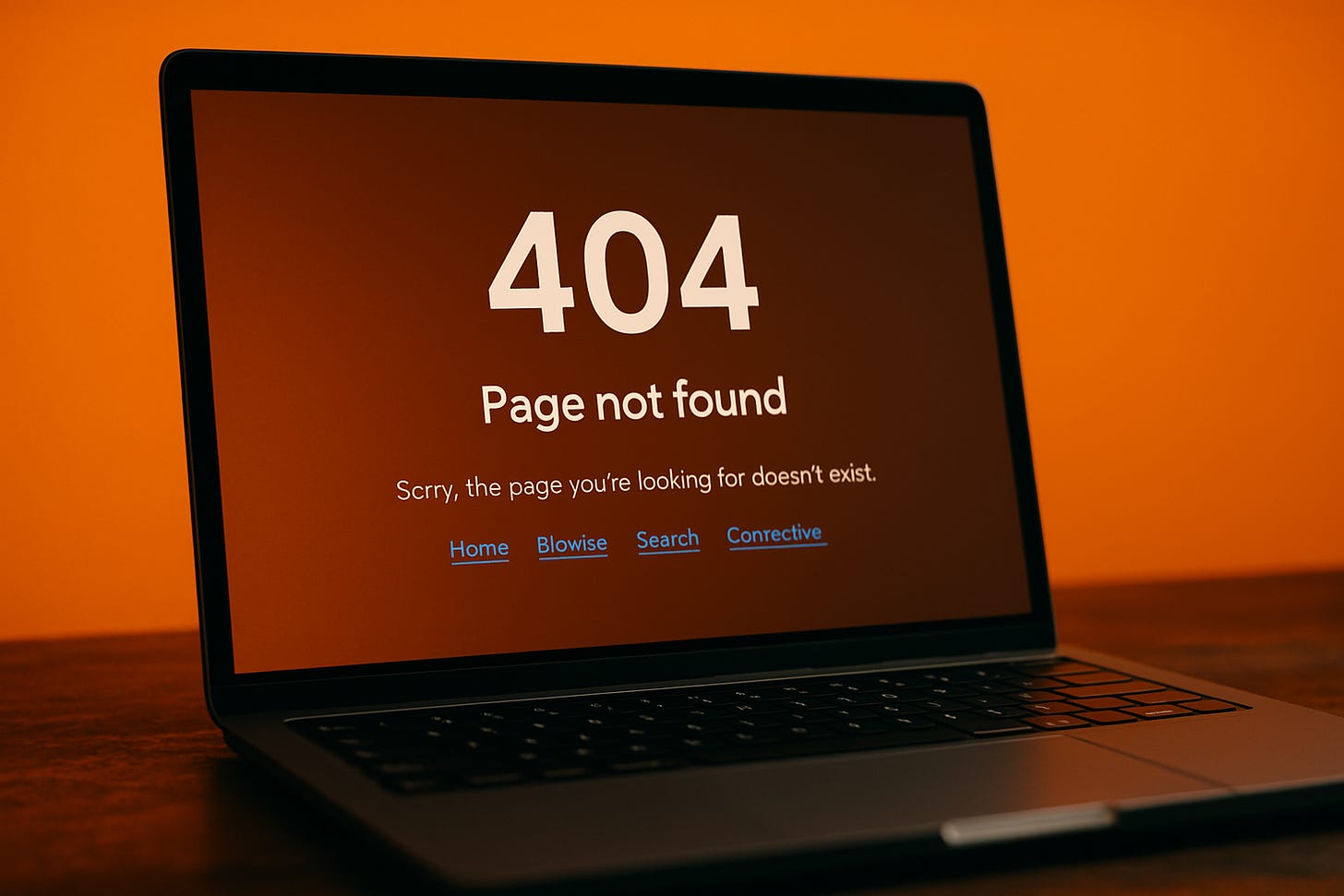Let’s talk about something that’s often overlooked when building an ecommerce site: the 404 error page.
You know the one. It’s what customers see when they click a broken link or look for a page that doesn’t exist. Most of the time, it’s a cold, generic message: “404 - Page Not Found.” Not exactly inspiring.
But here’s the thing: your 404 page isn’t just a technical necessity. It’s an untapped opportunity.
I was recently chatting with one of my clients, and she showed me the 404 page she’s preparing for her new site. It was simple yet brilliant. Instead of treating it as a dead-end, she used it as a guidepost. There was a friendly note acknowledging the error, links to shop her collections, and a touch of humor that reflected her brand’s personality. It made me realize how much thought we should put into this often-overlooked page.
And here’s why it matters:
Generic 404 pages can have bounce rates over 70%.
Well-crafted ones? They’ve been shown to cut bounce rates in half and even boost conversions by 10–15%.
The best part? Crafting the perfect 404 page doesn’t have to be overwhelming. You can use AI tools like ChatGPT or Claude to help you come up with creative wording that’s on-brand and friendly. These tools can even help you brainstorm helpful navigation links or suggest fun, engaging language that fits your voice.
And don’t stop there. Go explore other companies’ 404 pages for inspiration. See how some brands use humor, offer helpful resources, or provide quick links to top-selling products. You might find just the spark you need to make your own page truly memorable.
Too often, the 404 page is treated as an afterthought, a blank canvas left untouched. But what if you turned it into a mini welcome mat?
Here’s how you can do it:
1. Make it personal. Write a message in your brand’s voice. A little humor or warmth goes a long way.
2. Keep it helpful. Include a search bar, links to popular products or categories, and maybe even a quick link to your homepage or customer support.
3. Stay on-brand. Add your logo, colors, and imagery. Make it look like it belongs to your site—not a generic error screen.
4. Think of it as a second chance. If a customer didn’t find what they were looking for, this is your chance to guide them toward something else they might love.
5. Tap into AI. Tools like ChatGPT and Claude can help you fine-tune your message, add personality, and keep your tone consistent. They can even generate a few sample messages to get you started.
In ecommerce, it’s the little details that set you apart. A thoughtfully crafted 404 page might not seem like much, but it can go a long way in showing visitors that you care about their experience.
What’s your 404 page doing for you? Take a minute today to review it. If it’s just the default message, consider giving it a refresh. Make it helpful, make it friendly, and make it part of your customer experience.




Absolutely. The 404 page is even more important when you move from one platform to another. With that said, you also need to make sure you create 301 redirects because the URL structure will be different on each platform. Here's a good article from SEM Rush on the topic. https://www.semrush.com/blog/301-redirects/
Thank you for this super helpful information! I'm in the midst of a website migration.. this is a perfect way to help my clients move with me to the new site.